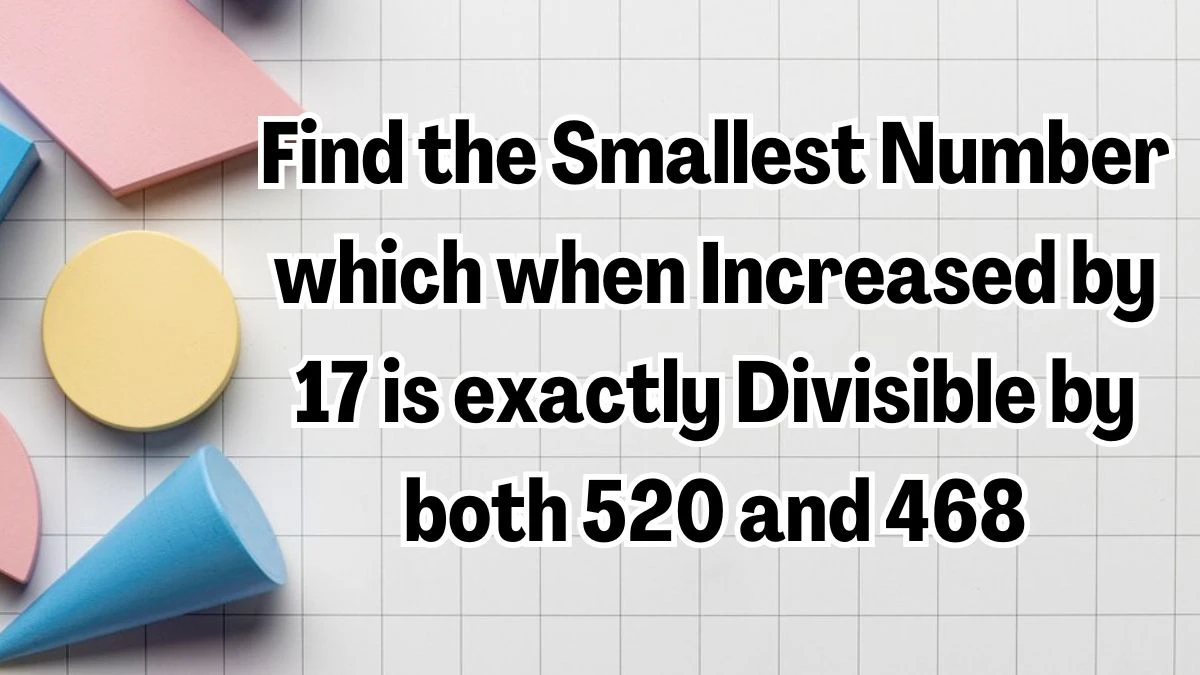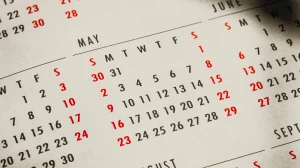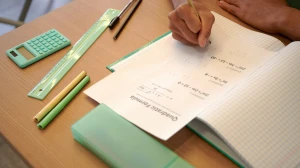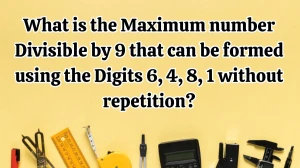Find the Smallest Number which when Increased by 17 is exactly Divisible by both 520 and 468
by
Updated Jun 08, 2024

Find the Smallest Number which when Increased by 17 is exactly Divisible by both 520 and 468
To find the smallest number which, when increased by 17, is exactly divisible by both 520 and 468, use the concept of the Least Common Multiple (LCM). The LCM of two numbers is the smallest number that is a multiple of both numbers.
Factorize 520 and 468 into their prime factors
520 = 2³×5×13
468 = 2²×3²×13
Find the LCM:
The LCM is found by taking the highest powers of all prime factors that appear in the factorization of the given numbers.
The prime factors are 2,3,5, and 13.
The LCM of 520 and 468 is calculated as follows:
LCM = 2³×3²×5×13
Calculate each part
2³ = 8
3² = 9
8×9 = 72
72×5 = 360
360×13 = 4680
The smallest number which, when increased by 17, is exactly divisible by both 520 and 468 is obtained by subtracting 17 from the LCM of 520 and 468.
4680 − 17 = 4663
Least Common Multiple (LCM)
Understanding the concept of LCM and how to calculate it using prime factorization is essential for solving various mathematical problems and real-life applications.
Understanding the Least Common Multiple (LCM):
- The LCM of two or more numbers is the smallest number that is a multiple of all the given numbers.
- It is useful for finding common periods, scheduling problems, and solving problems involving multiple conditions.
Prime Factorization:
- Prime factorization involves breaking down numbers into their prime factors, which are numbers that are only divisible by 1 and themselves.
- Prime factors are the building blocks of numbers and are essential for calculating the LCM and Greatest Common Divisor (GCD).
Steps to Find the LCM:
- Factorize each number into its prime factors.
- Identify the highest power of each prime factor present in any of the numbers.
- Multiply these highest powers to obtain the LCM.
Applications
- Finding the LCM is crucial for solving mathematical problems involving multiple cycles, periods, or repeated events.
- The LCM is used to find the common denominator for adding and subtracting fractions, ensuring that fractions are combined correctly.
- In algebraic expressions, the LCM is used to simplify equations involving multiple terms with different denominators.
- LCM helps in solving problems related to scheduling and planning where multiple cycles or events need to be synchronized.
- Algorithms that involve cycles and repeated events often use the LCM




